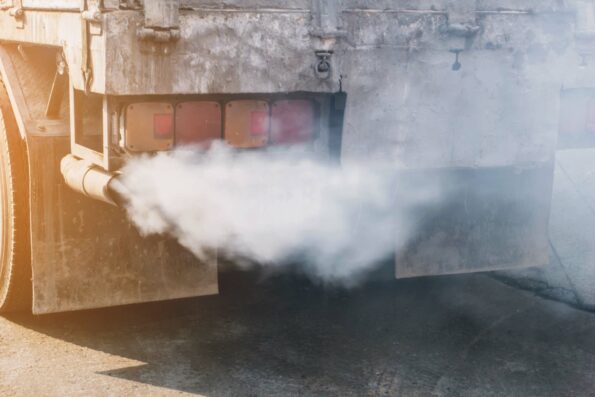Idling is when an engine is running but the vehicle is not moving. It’s common for a truck to idle:
- After starting up, the driver is doing a pre-trip inspection and wants to check for rattles
- The driver is filling the airbags after connecting a trailer
- The driver has stopped for work time requirements but wants to use the air conditioning to remain cool or to heat the cab, or to cool down the engine
- While waiting to be loaded or unloaded
- Being stuck in a traffic jam
- Using PTO to power another piece of equipment such as a truck loader crane.
What problems does idling cause?

While a truck will at traffic lights could be a daily occurrence, long-duration truck idling consumes hundreds of billions of litres of diesel every year, creates millions of tonnes of carbon dioxide and hundreds of thousands of tonnes of nitrogen oxides. Plus, several thousand tonnes of unburnt fuel in the form of particulate matter are ejected into the air, and some idling can cause noise pollution.
When sitting in the vehicle while it’s moving, or when walking around a stationary vehicle, drivers and other people in the vicinity are exposed to pollution because there’s no airflow to vent it. People who live on main arterial roads and the fringes of industrial areas are more likely to encounter idling trucks which exposes them to diesel pollution.
Some trucks will use over 2000 litres of fuel annually just by idling – a truck can use 4 litres of fuel an hour while idling. Reducing idling improves profit. Idling also wears out the engine more quickly and increases maintenance costs.
Internal combustion engines run better when they are operated under load and once they have warmed up. Idling creates excessive wear or oil consumption, smoke, poor performance and ultimately can cause engine failure. It’s good practice to warm up your engine on cold mornings to preheat the engine and oiil. The warmer oil flows better within the engine, allowing the cylinder head components to be lubricated as they’re being driven by the oil pump. This usually takes between 1-3 minutes.
How can you reduce engine idling? Check out our article on how to reduce truck idling here.
Companies should have an idling policy for their vehicles.
